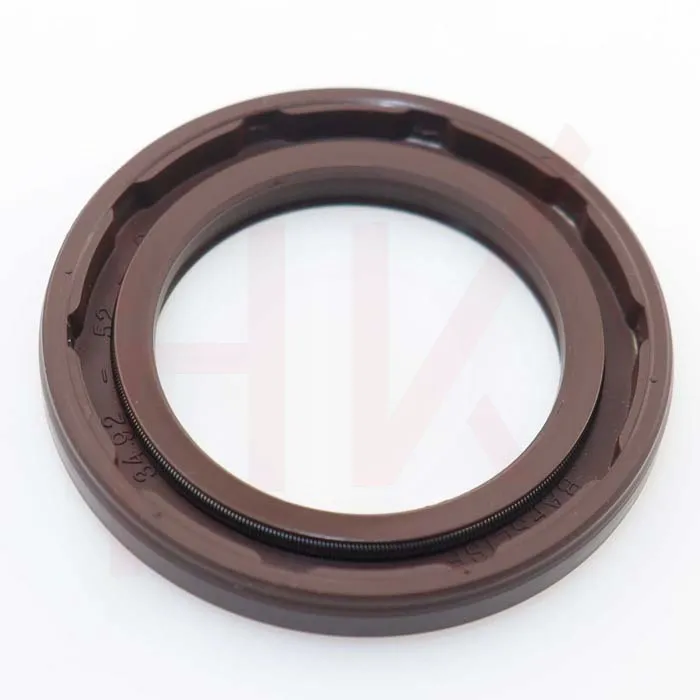Nov . 10, 2024 07:36 Back to list
Understanding Hydraulic Ram Seals and Their Importance in Fluid Power Systems
Understanding Hydraulic Ram Seals Functionality, Types, and Maintenance
Hydraulic ram seals play a crucial role in ensuring the efficient operation and longevity of hydraulic systems. These seals are designed to prevent leaks, maintain pressure, and protect the internal components of hydraulic machinery from contaminants. As such, selecting the right hydraulic ram seals and ensuring their proper maintenance is vital for the overall performance of hydraulic systems.
Functionality of Hydraulic Ram Seals
Hydraulic ram seals are essential for maintaining the integrity of hydraulic systems. They perform several functions, including
1. Preventing Fluid Leakage The primary role of hydraulic ram seals is to prevent hydraulic fluid from leaking out of the system. Any leakage can lead to a loss of pressure, which directly impacts the performance of the equipment.
2. Maintaining Pressure Seals help maintain the necessary pressure within the hydraulic system, which is essential for the efficient transfer of power. This pressure is crucial for performing work, such as lifting or moving heavy loads.
3. Protecting Internal Components Seals act as a barrier against dirt, dust, and other contaminants that could enter the hydraulic system. Contaminants can cause wear and tear on internal components, leading to potential failures.
4. Reducing Friction Many hydraulic ram seals are designed to minimize friction between moving parts. This not only enhances performance but also improves the lifespan of the hydraulic system.
Types of Hydraulic Ram Seals
There are various types of hydraulic ram seals, each suited to specific applications and conditions
1. Dynamic Seals These seals are used in applications where there is relative motion between the sealing surfaces. They can include lip seals, O-rings, and piston seals, which are designed to withstand the high pressures and velocities typical in hydraulic systems.
2. Static Seals Static seals are used in applications where there is no movement between the sealing surfaces. They include gaskets and packing, designed primarily to prevent leakage around flanges, junctions, and other connections in the hydraulic system.
3. Rotary Seals These seals are specifically engineered to handle rotating shafts. They are vital in applications where hydraulic components are subjected to rotational movement, such as motors and pumps.
4. U-Cup Seals Commonly used in hydraulic cylinders, U-cup seals provide excellent sealing performance for both dynamic and static applications, making them a versatile choice for hydraulic systems.
hydraulic ram seals

Choosing the Right Seal
Selecting the appropriate hydraulic ram seal involves considering several factors
1. Material Compatibility The seal material must be compatible with the hydraulic fluid used in the system. Common materials include rubber compounds, polyurethane, and PTFE, each offering different resistance properties to chemicals and temperature.
2. Operating Conditions The operating temperature, pressure, and speed should be assessed to ensure the chosen seal can withstand these conditions without degrading.
3. Application Requirements Understanding the specific requirements of the application, such as the type of movement (linear or rotary) and the environment (exposure to contaminants), is crucial in selecting the right seal.
Maintenance of Hydraulic Ram Seals
Proper maintenance of hydraulic ram seals can significantly enhance their lifespan and reliability. Here are some tips
1. Regular Inspection Conduct regular inspections to identify any signs of wear or damage. Look for signs of leakage, fraying, or hardening of the material.
2. Keep the System Clean Contaminants can damage seals and should be kept out of the hydraulic system. Regularly clean the external surfaces of the machinery and ensure the hydraulic fluid is free of contaminants.
3. Monitor Fluid Levels Maintaining proper fluid levels can help prevent excess wear on seals. Low fluid levels can lead to increased pressure on seals, resulting in premature failure.
4. Immediate Repairs If a leak or seal failure is identified, it should be addressed immediately to prevent extensive damage to the hydraulic system and avoid costly downtime.
Conclusion
Hydraulic ram seals are an integral component of hydraulic systems, providing essential sealing functions that enhance performance and reliability. By understanding the types, functions, and maintenance practices associated with these seals, operators can ensure the longevity and efficiency of their hydraulic machinery. A proactive approach to seal selection and upkeep is paramount in optimizing hydraulic system performance and preventing costly failures.
-
TCN Oil Seal Metal Ring Reinforcement for Heavy Machinery
NewsJul.25,2025
-
Rotary Lip Seal Spring-Loaded Design for High-Speed Applications
NewsJul.25,2025
-
Hydraulic Cylinder Seals Polyurethane Material for High-Impact Jobs
NewsJul.25,2025
-
High Pressure Oil Seal Polyurethane Coating Wear Resistance
NewsJul.25,2025
-
Dust Proof Seal Double Lip Design for Construction Equipment
NewsJul.25,2025
-
Hub Seal Polyurethane Wear Resistance in Agricultural Vehicles
NewsJul.25,2025
-
The Trans-formative Journey of Wheel Hub Oil Seals
NewsJun.06,2025
Products categories
















